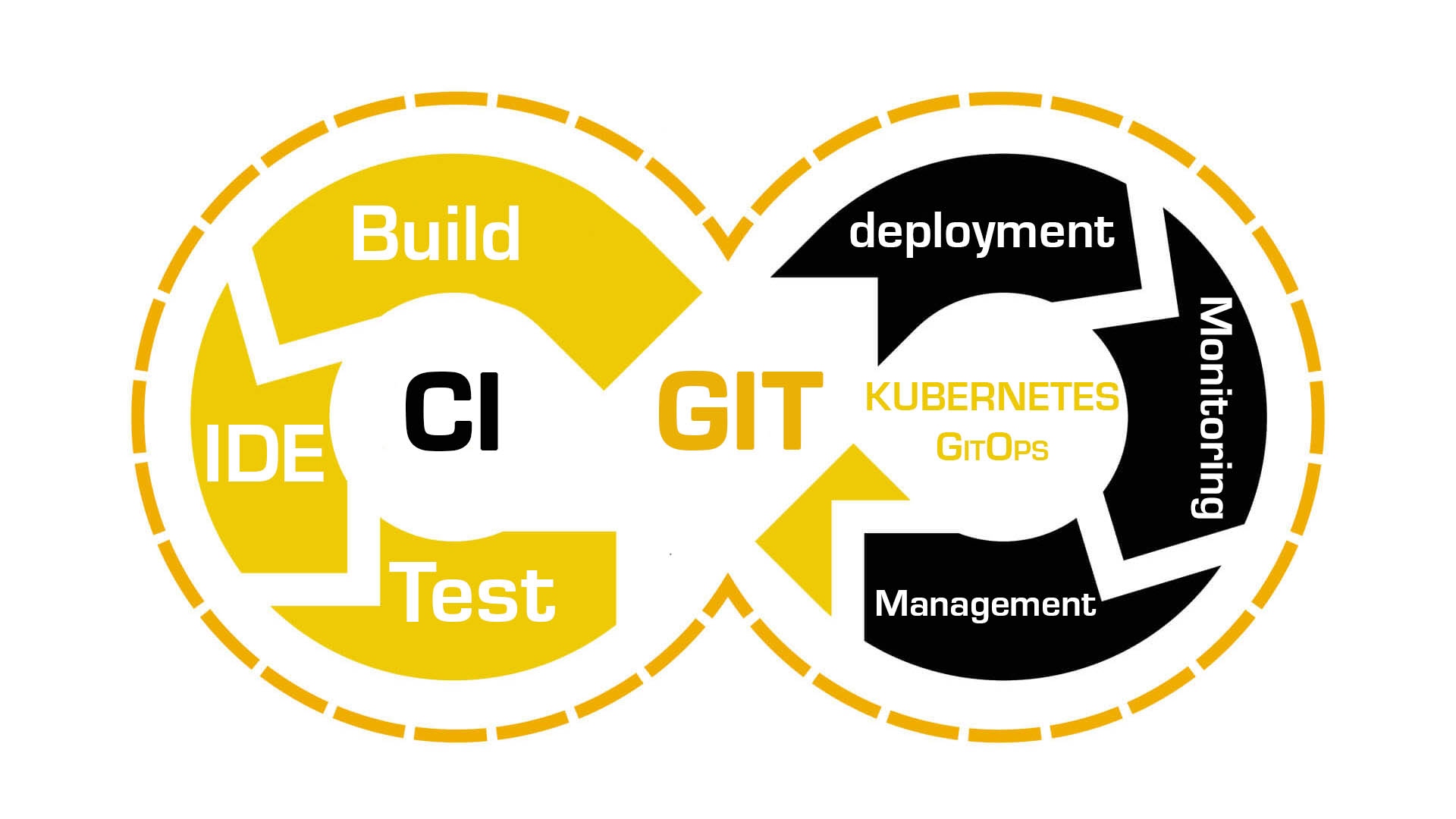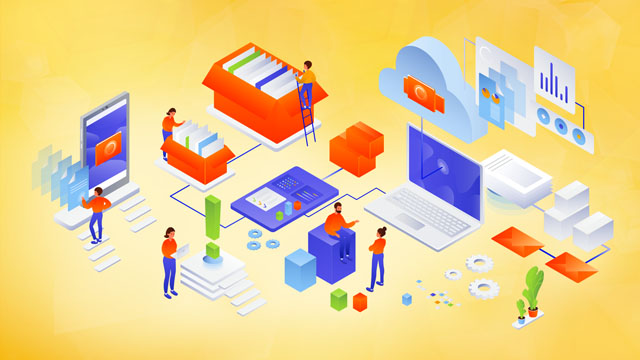GitOps

Working with the GitOps methodology is slowly becoming a standard in the IT industry. Full access to the history of changes, automation of processes or the possibility of significant acceleration of subsequent implementations are its basic advantages. Based on our many years of experience and expert knowledge, we have built an offer dedicated to the implementation and care of infrastructures built on the GitOps approach. But first, a few words about what GitOps is in general and whether it can really be the best solution, for your business.

What is GitOps?
GitOps is an operations platform that uses DevOps best practices applied to building applications and automating infrastructure. These can include version control, collaboration, or CI/CD tools. Although the software development cycle has become almost entirely automated, building the infrastructure still remains a largely manual process carried out by specialized teams. Given the increasing demands placed on modern infrastructures, the ability to implement automation also for infrastructure development processes is becoming increasingly important. This is because a modern infrastructure must be flexible and able to efficiently manage the cloud resources required for continuous deployment.
Modern applications are built for speed and scalability. Organizations characterized by a mature DevOps culture are able to deploy code within the production infrastructure hundreds of times a day. They achieve this by using development best practices such as code review and CI/CD pipelines that automate testing and deployment.
GitOps is a methodology for automating the infrastructure provisioning process. Just as development teams use application source code, operations teams, working with the GitOps methodology, use configuration files, stored as code (IaC). GitOps configuration files, generate the same infrastructure environment every time it is deployed.
GitOps in practice
The GitOps workflow helps teams manage their IT infrastructure through the processes they already use during application development. It requires three core components.
IaC
GitOps uses the Git repository as a single source of truth for infrastructure definition. Git is an open source version control system that tracks swaps in code management, and the Git repository is a folder. git saved in the project that tracks all changes made to project files over time. Infrastructure as code (IaC) is the practice of storing the entire infrastructure configuration as code. The actual desired state may or may not be stored as code.
MRs
GitOps uses Merge Requests (MRs) as the change mechanism for all infrastructure updates. MRs are spaces where teams can collaborate via reviews and comments and where formal approvals take place. The merge is approved for the main branch and also serves as a control log.
CI/CD
GitOps automates infrastructure updates using a Git workflow with continuous integration (CI) and continuous delivery (CD). Once the new code is merged, the CI/CD pipeline implements the change to the environment. Any configuration changes (manual or errors) are overridden by GitOps automation so that the environment converges to the state defined in Git. GitLab uses CI/CD pipelines to manage and implement GitOps automation. However, it is possible to use other forms of automation.
Setting up the environment as a GitOps repository
In the GitOps approach, the code repository is at the heart of the code deployment process. According to good practice, there are at least two repositories: the application repository and the environment configuration repository.
The application repository contains the source code and a description of the deployment process. The environment configuration repository, on the other hand, contains a description of the deployment of the currently requested infrastructure. It describes the configurations of applications and infrastructure services (message broker, service mesh, monitoring tool) that should work in the deployment environment.
Challenges
Implementing change in an organization is never easy, and GitOps is no exception. Implementing the GitOps methodology requires discipline and commitment to a new way of doing things.
GitOps is a process that improves the quality of team collaboration, but it does not come naturally to everyone. The GitOps approval process explicitly means that developers make changes to code and create a merge request. The approver merges the changes, followed by deployment. This sequence of steps introduces a new element into the infrastructure, which can seem time-consuming for engineers used to making quick, manual changes
Therefore, it is important that all team members follow the new rules. The temptation to edit something directly in production or to make a manual change can be difficult to suppress, but with consistency from all team members, GitOps will serve its purpose.
Summary
As with many other technology terms, GitOps is not precisely defined in the same way by everyone in the industry. The principles inherent in the GitOps methodology can be applied to virtually all types of infrastructure automation, including virtual machines and containers.
Infrastructure management through GitOps is done in the same version control system as application development, this allows teams to collaborate more in a central location while benefiting from built-in Git features.
GitOps, and Hostersi
Our expert knowledge and experience in implementing and operating infrastructures based on the GitOps methodology means that we are able to support any company, regardless of its level of sophistication or scale. Most importantly, however, we will also help you decide on the right working methodology for your organization, so before we start working together, we will conduct a series of discussions so that together we can choose the optimal solution for your business. Feel free to contact us!



